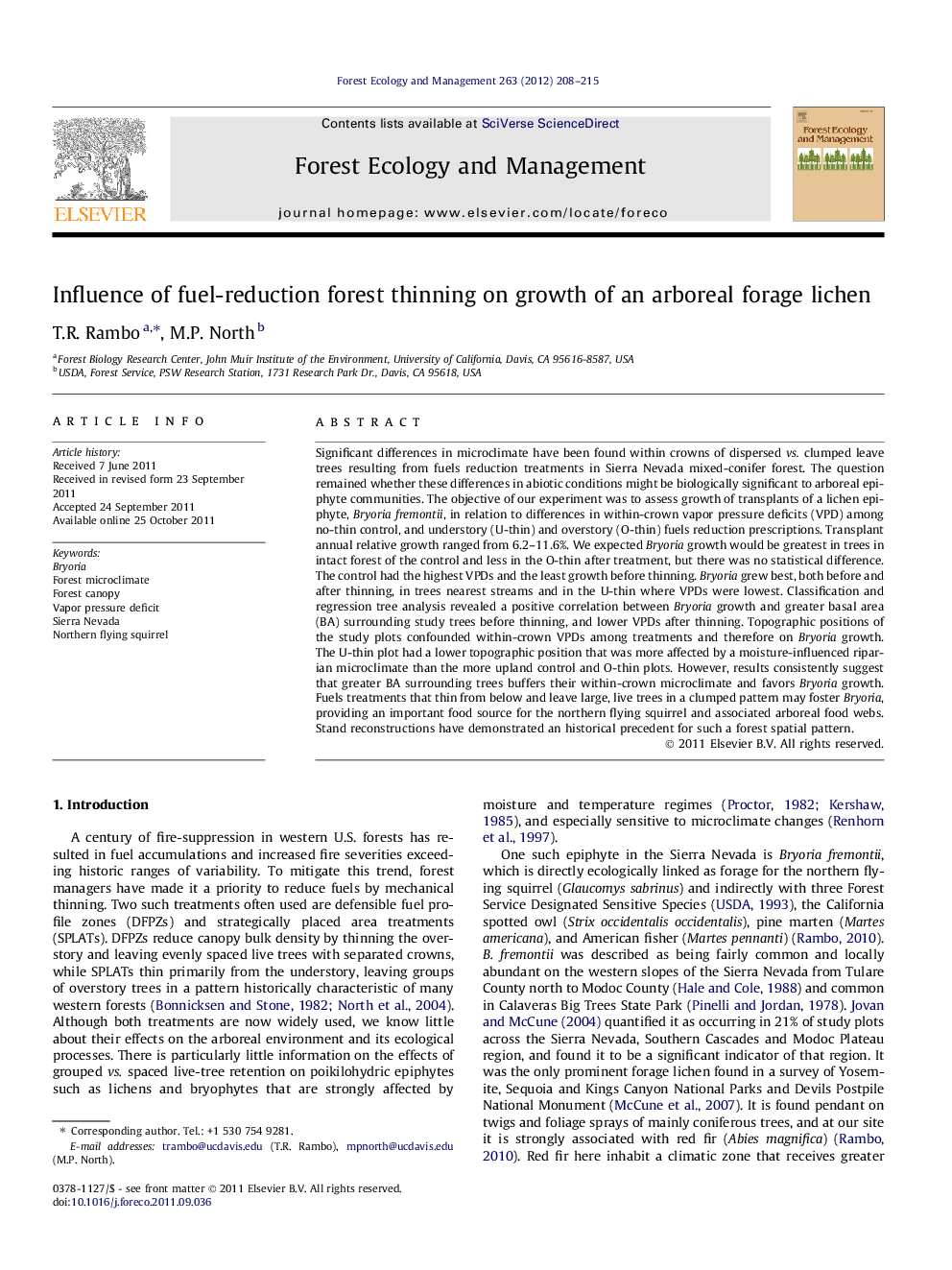| کد مقاله | کد نشریه | سال انتشار | مقاله انگلیسی | نسخه تمام متن |
|---|---|---|---|---|
| 87769 | 159265 | 2012 | 8 صفحه PDF | دانلود رایگان |

Significant differences in microclimate have been found within crowns of dispersed vs. clumped leave trees resulting from fuels reduction treatments in Sierra Nevada mixed-conifer forest. The question remained whether these differences in abiotic conditions might be biologically significant to arboreal epiphyte communities. The objective of our experiment was to assess growth of transplants of a lichen epiphyte, Bryoria fremontii, in relation to differences in within-crown vapor pressure deficits (VPD) among no-thin control, and understory (U-thin) and overstory (O-thin) fuels reduction prescriptions. Transplant annual relative growth ranged from 6.2–11.6%. We expected Bryoria growth would be greatest in trees in intact forest of the control and less in the O-thin after treatment, but there was no statistical difference. The control had the highest VPDs and the least growth before thinning. Bryoria grew best, both before and after thinning, in trees nearest streams and in the U-thin where VPDs were lowest. Classification and regression tree analysis revealed a positive correlation between Bryoria growth and greater basal area (BA) surrounding study trees before thinning, and lower VPDs after thinning. Topographic positions of the study plots confounded within-crown VPDs among treatments and therefore on Bryoria growth. The U-thin plot had a lower topographic position that was more affected by a moisture-influenced riparian microclimate than the more upland control and O-thin plots. However, results consistently suggest that greater BA surrounding trees buffers their within-crown microclimate and favors Bryoria growth. Fuels treatments that thin from below and leave large, live trees in a clumped pattern may foster Bryoria, providing an important food source for the northern flying squirrel and associated arboreal food webs. Stand reconstructions have demonstrated an historical precedent for such a forest spatial pattern.
► The lichen epiphyte Bryoria is an important resource for arboreal food webs.
► We compared its growth in canopies of two fuels reduction prescriptions.
► It grew best in trees nearest streams and with lowest vapor pressure deficits.
► Greater basal area surrounding trees appeared to buffer within-crown microclimates.
► Thinning from below and leaving large, live trees clumped may foster Bryoria.
Journal: Forest Ecology and Management - Volume 263, 1 January 2012, Pages 208–215